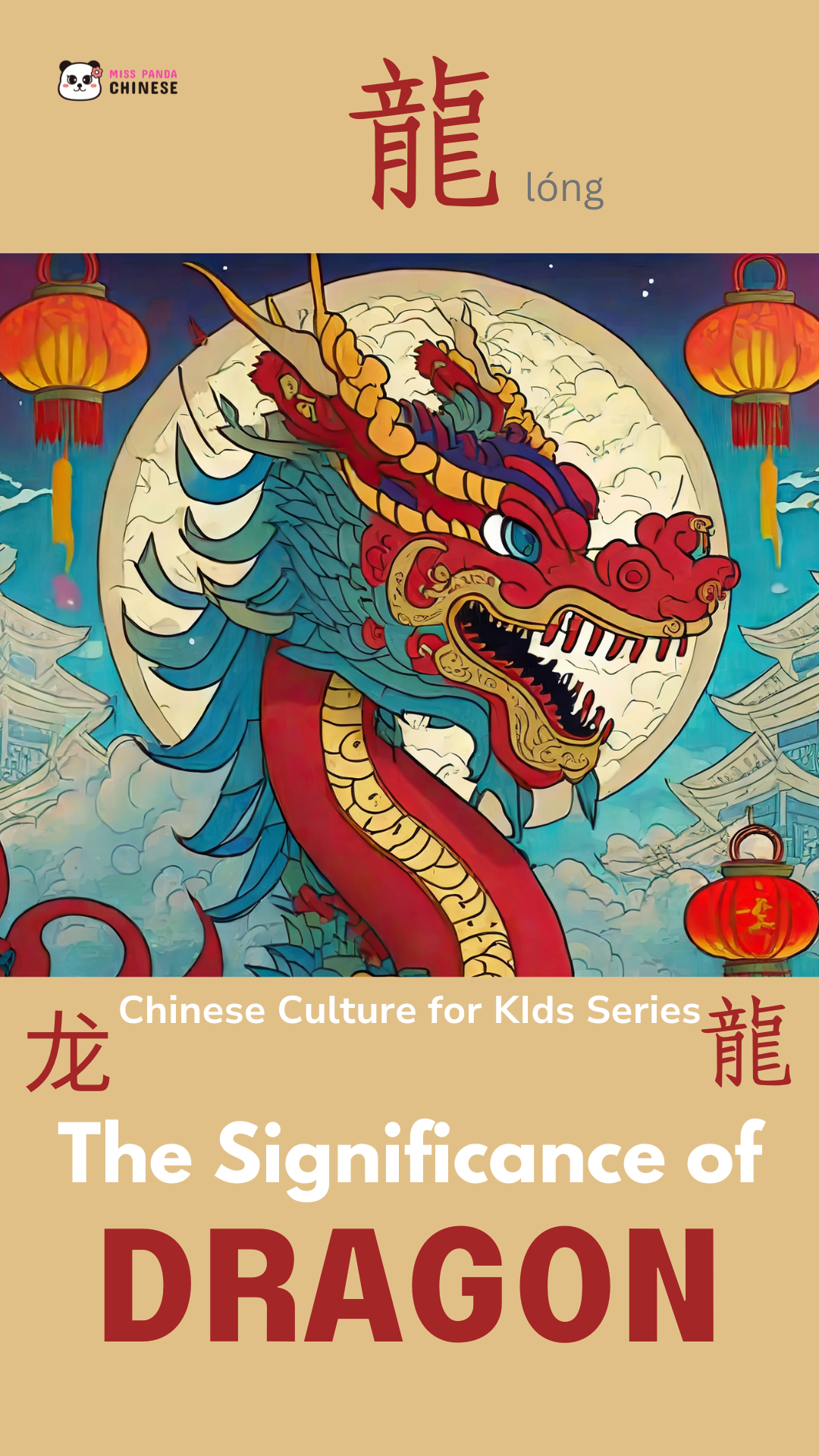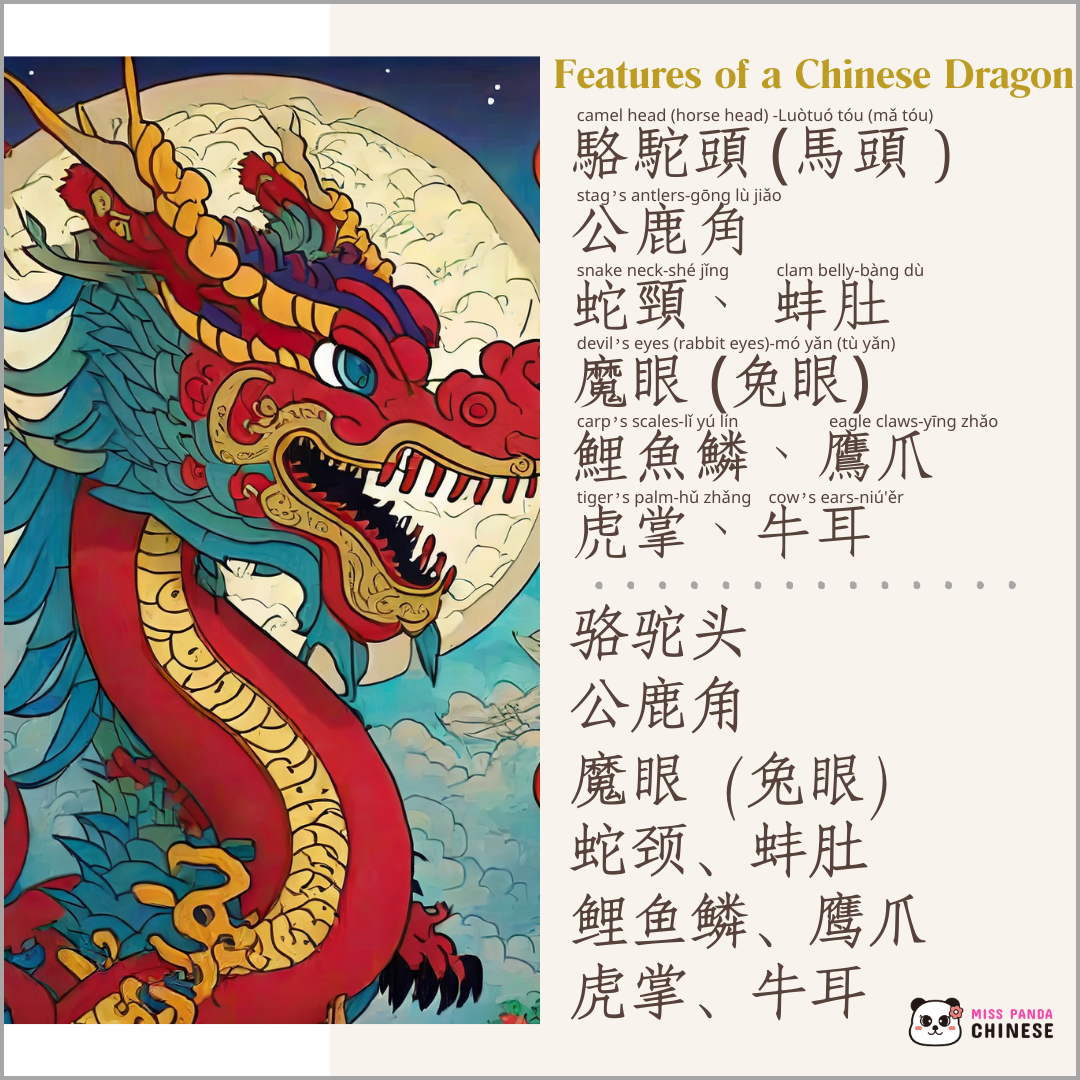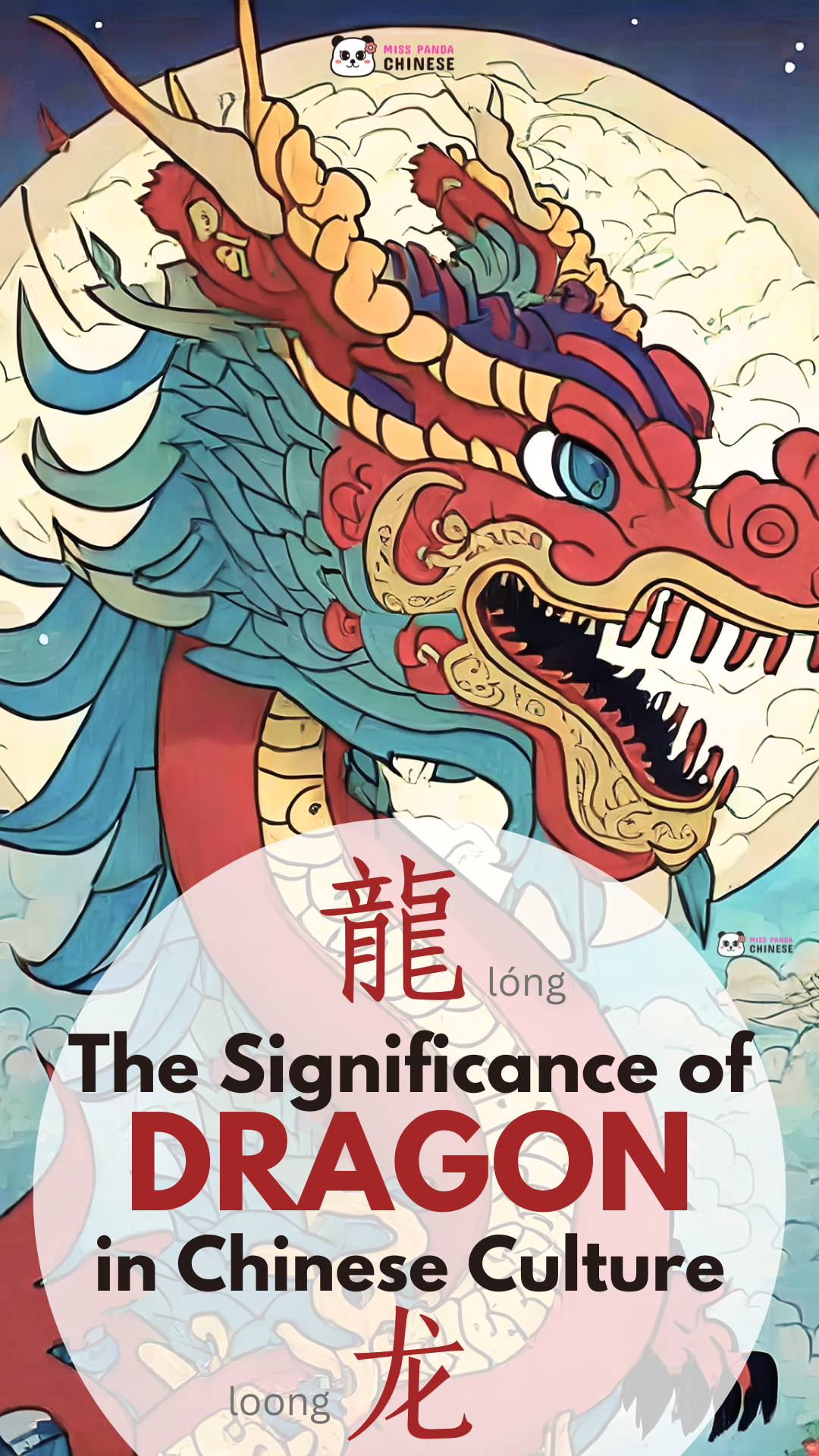The Significance of Dragon in Chinese Culture 龍 • 龙 The Mighty Dragon

In Chinese culture, few symbols possess the mighty power and significance of the dragon. This Chinese mythical creature, far from the dragons in Western stories, has a complex array of profound meanings, from imperial authority to auspiciousness and prosperity. Its depiction and reverence in Chinese society and culture offer a fascinating glimpse into the values, beliefs, and historical identity of one of the world’s oldest civilizations.
In the Year of the Dragon, let’s explore the significance of the dragon in Chinese culture.
You might have heard about having a baby in the year of the dragon so a couple will have a Dragon Baby. Even though it is an old-fashioned thought, it still exists in some Chinese families. Therefore, there is often a birth rate increase in the year of the dragon. After six years, schools may not have enough space for all the baby dragons.
But, why dragon babies? What’s the significance of the Dragon in Chinese culture? Let’s explore together.
Emperor’s Robe • lóng páo 龍袍 – 龙袍
In Chinese culture, people proudly identify themselves as descendants of dragons (lóng de chuán rén 龍的傳人•龙的传人). The emperor’s robes, known as dragon robes (lóng páo 龍袍 – 龙袍), are richly embellished with dragon motifs, symbolizing their supreme power. Furthermore, Chinese emperors are called the “Son of Heaven (tiān zi 天子),” and their physical form is described as the “Dragon’s body (lóng tǐ 龍體•龙体).”
What’s particularly fascinating is the distinction between the five-clawed dragon, exclusively for emperors, and the four-clawed dragon for the royal family and nobles. This distinction underscores the hierarchical structure of imperial China, revealing the dragon’s significant role as a guardian of power and nobility.
The Symbolic Meaning of the Year of the Dragon
In Chinese culture, dragons symbolize strength, enthusiasm, and renewal. They were believed to control rainfall, rivers, and seas to ensure bountiful harvests and prosperity for the agricultural society.
Dragon is the 5th in the 12 Chinese animal birth signs, many call them the Chinese Zodiac. Year of the Dragon is considered an auspicious year to have a dragon baby in Chinese culture. Grandparents and Grandparents-to-be often are looking to have a grandchild with the characteristics of courage, confidence, and kindness – just like the dragon. The dragon year is often associated with growth, prosperity, and auspicious beginnings.
In addition, cultural expressions such as dragon dances and dragon boat races during cultural festivals like the Chinese Lunar New Year (chūn jié 春節•春节) and the Duan Wu Festival (duān wǔ jié 端午節•端午节) – a.k.a Dragon Boat Festival also highlight the symbolic meaning of dragon – leadership, strength, and benevolence.
The Features of the Chinese Dragon
The Chinese dragon is described as a composite creature, drawing characteristics from nine different animals, though variations exist by region and ethnic group. The features include a composite of NINE animals. Look closely and see. Use the image below to guide the kids to explore their imagination and share their thoughts.
-
The head of a camel (or horse)
-
The antlers of a stag (or deer)
-
The eyes of a demon (or rabbit),
-
The neck of a snake,
-
The belly of a clam,
-
The scales of a carp,
-
The claws of an eagle,
-
The paws of a tiger,
-
The ears of a cow.
Serpentine Body (shé xíng shēn 蛇型身)
Typically, dragons are depicted as serpentine creatures with elongated, snake-like bodies, often shown in an undulating, dynamic pose reflecting power and movement. Do you agree?
No Wings (wú yì 無翼 = méi yǒu chì bǎng 沒有翅膀)
Unlike their Western counterparts, Chinese dragons have no wings. Their ability to fly is attributed to their supernatural powers, showcasing their unique position in Chinese mythology.

Dragon in Chéng Yǔ 成語 • 成语 Expressions
龙凤呈祥 (lóng fèng chéng xiáng)
-
Translation: The dragon and phoenix bring auspiciousness
-
Meaning & Cultural Context: This expression refers to a sign of wealth and good fortune or an auspicious event. It is often used to describe a decoration item at a wedding or a dish served at a Chinese wedding, symbolizing perfect harmony, good fortune, and the union of the most powerful and benevolent mythical creatures in Chinese culture: the dragon (龙) and the phoenix (凤). The dragon is traditionally associated with strength and power for males, while the phoenix represents beauty and grace for females.
Discover and Learn More-Extended Resources
Chinese Lunar New Year Guide
Why the Dragon is Central to Chinese Culture |Monstrum (PBS) in English
Watch how to write Dragon 龍 (traditional Chinese) in various calligraphy styles (in Mandarin)
If you were born in the year of the Dragon you know how special it is. In the meantime, when someone tells you that he/she is a”little” dragon, you need to know that they were born in the year after the year of the Dragon, the year of the SNAKE. “Little Dragon,” in Chinese animal birth sign refers to SNAKE.
What stands out to you about Chinese dragons?
The Significance of Dragon • The Significance of Dragon • The Significance of Dragon

